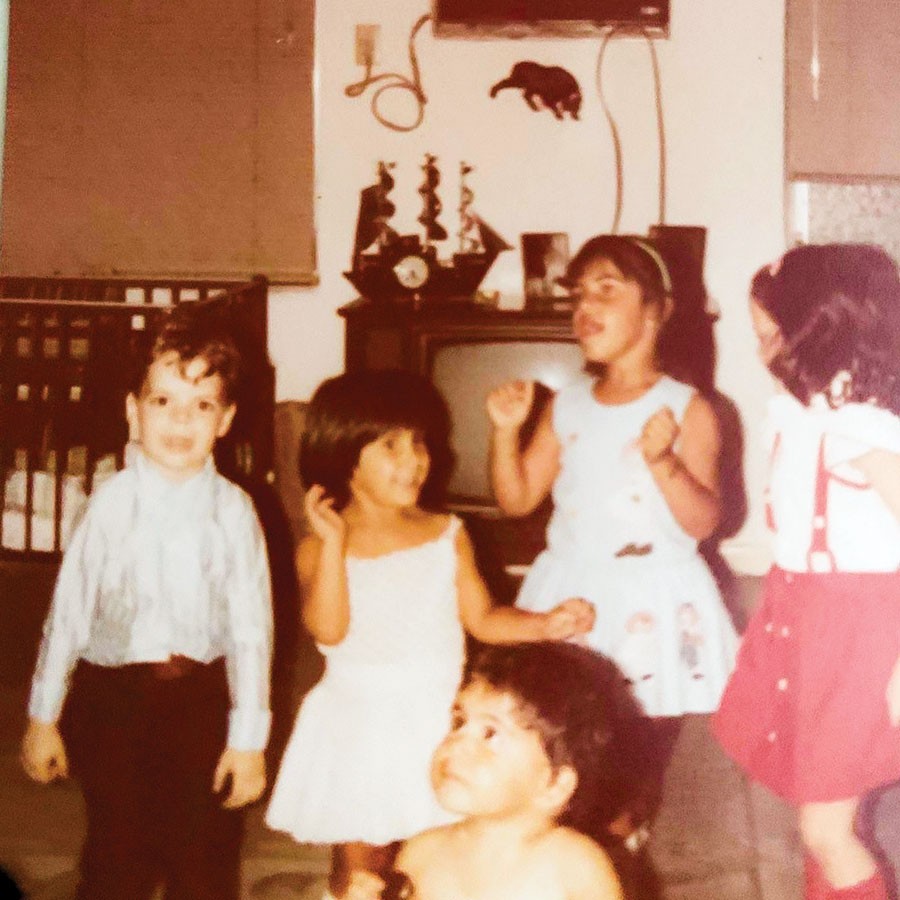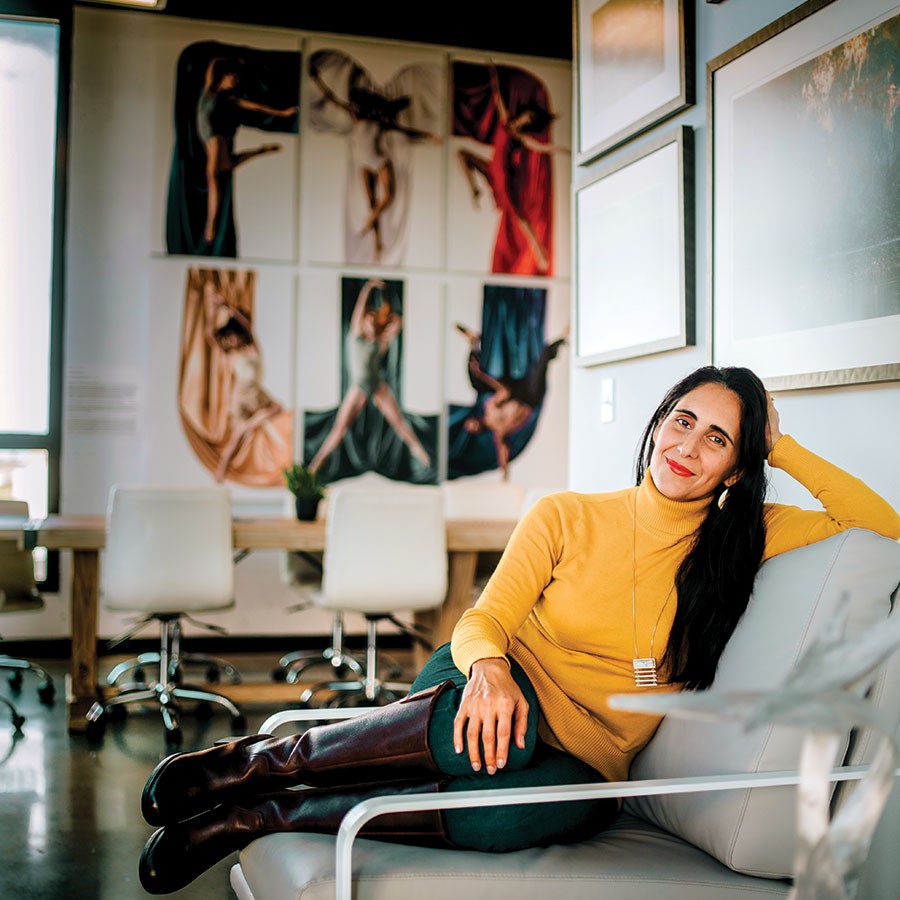On a grainy VHS tape recently rediscovered in Miami, a young Leymis Bolaños Wilmott shows early signs of a career in dance. In the video, Wilmott arranges and choreographs her sisters and cousins, keeping them all in time and making sure they really sell the performance. “It’s a videotape of me dancing to Michael Jackson at a birthday party,” she says. This, apparently, was a recurring feature of her family gatherings: Wilmott moonwalking and spinning and dancing merengue or salsa for no other reason than a compulsion within her. But that grainy video convinced at least one reviewer (her aunt) that Wilmott had a future in dance. By any meaningful metric, she was right. Wilmott went on to receive formal training from the New World School of the Arts in Miami, an undergraduate degree from the University of Florida, then she earned an MFA in performance and choreography from Florida State University. But her journey began like many do—with a setback. “I first auditioned for a magnet program in seventh grade,” says Wilmott, “and I didn’t even have the right attire.” She had to compete with applicants in leotards and leggings that already had formal training while all she had was an unofficial résumé that included busting moves in her living room. The program rejected her application, but her mother was not having it. “My mom made a lot of noise and really questioned the whole magnet school system,” says Wilmott, challenging the school’s narrow assessment tools.
When she finally did get into that magnet program many mango seasons ago—“thanks to my loud Cuban mom,” she adds—Wilmott came to ballet, jazz and other codified forms as an outsider, fighting to get cast and eager to prove herself. The experience came to define her entire approach to dance, culminating in a master’s thesis concert called Fuzión Dance Artists. The concert, co-produced with longtime friend and collaborator Rachael Inman, pulled from disparate influences, with Inman’s ballet background and Wilmott’s Afro-Cuban roots blending into something new and inclusive, all packaged in the formal training each of them received over the years. “I remember watching those Benetton commercials in the ’90s that were so diverse,” she says, “and I just wanted to be someone that went out and championed diverse bodies and nationalities.”

And so, in 2006, Wilmott and Inman turned their theses into Fuzión Dance Artists, the tool with which the creative pair could become those champions. Their earliest practice spaces were a revolving door of borrowed rooms, some dancers with formal training, others, like a young Leymis herself, untrained but talented and aspiring. Their first shows featured a lot of choreography Inman and Wilmott worked on as graduate students. The energy was there, the youthful abandon when dancing for the joy of it, and it continued to evolve and grow into something bigger until, finally, Fuzión outgrew the garb of its infancy.
“It got to a point where the company was too big for me to run out of my car,” she jokes, “and if I wanted donors to take us seriously, I couldn’t keep meeting them at a coffee shop.” The company needed infrastructure, and it got it from founding board member Muriel Gordon Mayers.Mayers enjoyed a storied career in dance, both as a dancer and an educator. Equally as relevant, she practiced fiduciary accounting. With her love of dance and her selt-proclaimed proficiency with “bean-counting”, Mayers offered the perfect complementary skills to help Wilmott carry Fuzión into the future. Only, the growth of the company called for a new name.
“At some point, the word ‘fusion’ kept appearing everywhere,” says Wilmott, “so I was ready to make that switch.” After a decade of growth within the Sarasota community, nurtured and fed by its patrons, comprised of its locals, Wilmott and her trustee partner felt the name needed to sound official and honor its place in the community. “Sarasota Contemporary Dance fit perfectly; it reflected the area where we are supported,” says Wilmott. More importantly, the name sent a message: “We’re here to stay.”

And stay it has. Sarasota Contemporary Dance (SCD) entered its 15th year poised to continue cementing its legacy in Sarasota. But its 2020–2021 season, called “Quinceañera” in honor of Wilmott’s Cuban roots, suffered a slew of cancellations following the unwelcomed arrival of the COVID-19 pandemic. Like many performance art institutions and performers, SCD and its dancers have been sorely tested. Still, Wilmott has much to be grateful for. “I have lots of friends and colleagues that have been doing the work and not getting recognition,” says Wilmott, “but Sarasota is a special place.” With strong support from area donors and philanthropic organizations, SCD survived the first wave of closures while managing to still pay its dance teachers. The support also helped buy the company time to reconfigure its operations and create some digital programming.
Last month, SCD held its Dance Makers show at Jane B. Cook Theatre. With help from a producing sponsor and another longtime benefactor, Sam Alfstad, the company managed to come up with a blended live/virtual event. The 280-seat theatre was pared down to 50 in-person viewers, while a comprehensive, multi-camera livestream was available for at-home viewers. In April, the company returns with a tribute performance for Mayers, including some of her favorite pieces from the company’s extensive catalog of choreography.
Though the contents of the 15th season might more readily be remembered for the absence of shows, the short-term emptiness of the studio or the desperation of seasoned performers to be onstage, the meaning of the season is one of optimism and hope. The company survived. Wilmott is still moving and shaking. “I never woke up thinking, ‘I want to have a company.’ I just wanted to shift the culture of dance and advocate for people that weren’t getting a chance. Being here this long and surviving as a company means everything,” she says. “It means there’s a legacy for contemporary dance in Sarasota; it means it’s bigger than me.” SRQ









